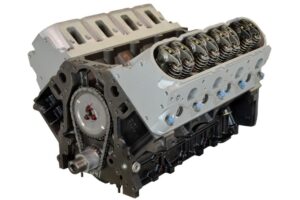Ford is one of the most reliable global automobile brands, from sports cars to pickups. Its vehicles offer superior performance because of their top-notch engines, including the 5.0 Coyote. Is the 5.0 Coyote engine reliable? What are its problems?
The table below summarizes the specs of the 5.0 Coyote engine:
| Gen 1 Coyote | Gen 2 Coyote | Gen 3 Coyote | |
| Horsepower | 412, 420 HP | 435 HP | 460 HP |
| Torque | 390 lb-ft | 400 lb-ft | 420 lb-ft |
| Displacement | 4.951 L | 4.951 L | 5.035 L |
| Stroke | 92.7 mm | 92.7 mm | 92.7 mm |
| Bore | 92.2 mm | 92.2 mm | 93 mm |
| Compression | 11:1 | 11:1 | 12:1 |
A naturally-aspirated V8 engine, the 5.0 Coyote, is known for its reliability. It packs innovative technologies and comes with tough construction. Despite such, it also has some problems, including engine tick, rough idling, stalling, and recirculation valve issues.
Read on to learn more about the 5.0 Coyote engine, including its specs, problems, and reliability.
5.0 Coyote Engine Specs
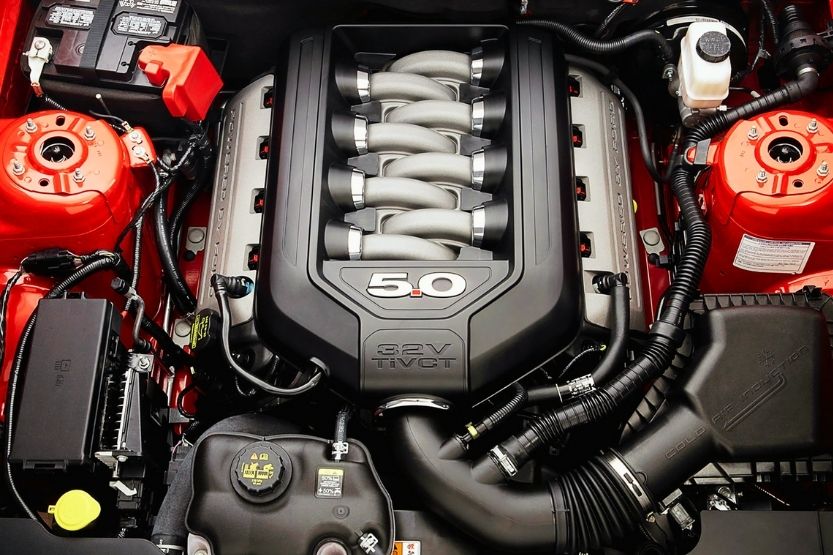
The 5.0 Coyote is a naturally-aspirated engine, part of Ford’s series of modular engines. Over the years, it has been through a series of updates, resulting in varying specifications and features depending on the specific generation or model:
1. Horsepower
Ford engines generate massive power, especially high-end cars like the Mustang. Unsurprisingly, the 5.0 Coyote engine packs plenty of horsepowers, making it reliable even under challenging conditions.
The Gen 1 50 Coyote engine has a horsepower of either 412 (2011 to 2012) or 420 (2013 to 2014) HP. The power is so high that the company has to strengthen the wall.
They did so by creating sturdy webbing instead of thicker material. Meanwhile, the Gen 2 Coyote engine has 435 HP, and the Gen3 has 460 HP.
2. Torque
Over the years, Ford upgraded the 5.0 Coyote engine’s power production to keep up with the changing demands of its users.
The Gen 1 engine has 390 lb-ft of torque. Gen 2, meanwhile, has 400 lb-ft, and Gen 3 has 420 lb-ft. Along with the increasing horsepower, there were also improvements in torque to deliver more superior performance.
3. Displacement
An engine’s displacement is responsible for moving fuel and air, generating power. Coyote engines generate high power like their competitors but with a smaller displacement.
The first and second-generation Coyote engines have a displacement of 4.951 L. Meanwhile, the third generation has a displacement of 5.035 L.
4. Stroke
All three generations of the 5.0 Coyote engines have a stroke of 92.7 mm. This specification refers to the distance in the cylinder at which the piston travels. The higher the stroke, the more power an engine can generate.
5. Bore
The bore of an engine refers to the diameter of its cylinder. A bigger bore means that an engine will have bigger valves.
In turn, it pushes more air, making it more powerful. Both the first and second-generation 5.0 Coyote engines have a bore size of 92.2 mm. The third generation, meanwhile, is slightly larger at 93 mm.
6. Compression
An engine’s compression is its combustion capacity, which is necessary for running the motor. A compression drop can result in power loss, idling, and high fuel consumption, among other problems.
The compression of both the first and second generations are 11:1 and 12:1 for the third generation of the 5.0 Coyote engine.
Is the 5.0 Coyote Engine Reliable?
In general, the 5.0 Coyote is a reliable engine. It has been through three generations, showing how Ford is still a preferred choice even with newer alternatives.
Each generation, new features are introduced to make the 5.0 Coyote stand out and deliver reliable performance:
1. Modular Engine
Top Modular Engine
One of the proofs that the 5.0 Coyote is reliable is its popularity. Many Ford enthusiasts consider it as the company’s top modular engine. Since the 1990s, Ford has made modular engines, including the 4.6 and 5.7 L. The most popular, however, is the 5.0 Coyote.
Holds the Record for the 1/8-mile Drag Race in 2018
The 5.0 Coyote holds two records, which are also why people love them. It holds the record for the 1/8-mile Drag Race in 2018 through the Modular Motorsports Racing.
The engine achieved a power of 3,500 HP hitting 202.29 seconds in 3.83 seconds. It also holds the ¼-mile Drag Race World Record, wherein it ran 265.43 mph in a 5.67-second pass.
2. Made Using High-Quality Materials
Tough Construction
Another reason for the reliability of the 5.0 Coyote engine is its tough construction. It uses high-quality materials to ensure longevity, even in the toughest conditions. With proper care and maintenance, this engine will withstand the test of time without compromising power.
All Components Are Built to Last
From the fuel injection port to the forged linking rods, all components are built to last. The parts are unrivaled in their class, so you can be confident that the engine will keep up, regardless of the driving environment.
3. Features Innovative Technologies
Being a product of years of research and development, the 5.0 Coyote has some of the most advanced technologies you will find in a modular engine.
Twin Independent Variable Camshaft Timing
For instance, it has Twin Independent Variable Camshaft Timing, a significant improvement from the old Variable Camshaft Timing Technology. It allows the engine to produce higher power and torque.
4. Easy to Modify
Being a popular modular engine, the reliability of the 5.0 Coyote stems from the fact that it allows easy modification. If there is anything that is not at par with your standards, you have the option to customize the engine as you deem fit.
Through a Coyote swap, you can provide superior power to old Mustangs and F-150s. It can be an easy DIY task for those with the knowledge, experience, and tools. Nonetheless, if you are not a handyman, it is best left to the pros.
Again, what is a 5.0 Coyote Engine? Ford Motor made the Coyote Engine, a 5.0 liter (L) naturally aspirated V8 engine for power sports cars, including Ford Mustangs and Ford F-150.
Most Common Problems with the 5.0 Coyote Engine
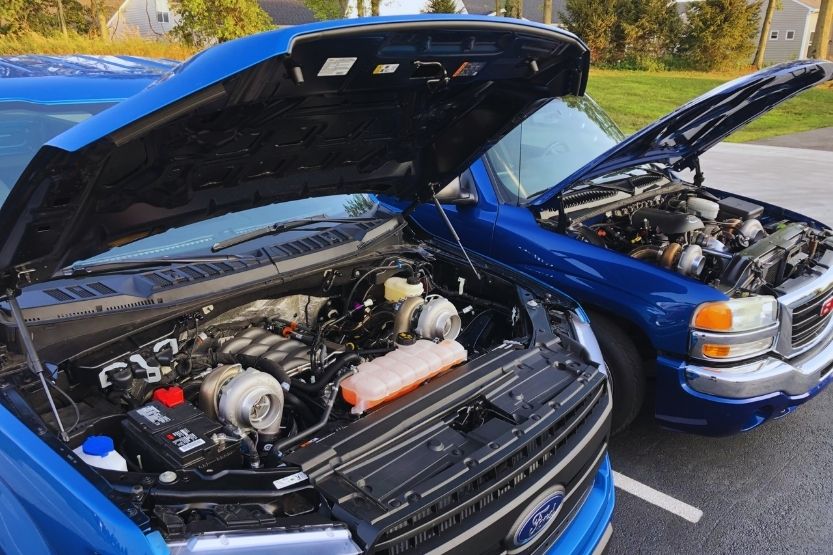
While the 5.0 Coyote is a reliable engine, it isn’t perfect. Below are some of the most common problems that it can experience:
1. Engine Tick
One of the most persistent problems in a 5.0 Coyote is engine tick. While it does not significantly impact reliability and performance, some people might find the weird noises annoying. While Ford notes that it is normal, many owners may worry when they hear the engine ticking.
2. Rough Idling
It is also common for 5.0 Coyote to idle roughly. Upon starting, the engine may not run smoothly, causing a bit of a shake-up.
Faulty Fuel Pressure Sensor
A potential culprit is the fuel pressure sensor, which might warrant a replacement. The failure to do so early can result in more serious consequences for the engine, which can also be more expensive to repair.
3. Stalling
Aside from rough idling, the 5.0 Coyote can also be prone to stalling. This can lead to power loss when you are driving. You can attribute one problem to a dirty throttle body, which you can fix quickly by cleaning such. A bad battery can also be the suspect for engine stalling.
4. Spark Plug Damage
While the 5.0 Coyote has several parts, one that is often easily prone to damage is the spark plug. Pay attention to several indicators that it needs repair or replacement, including:
- Low gas mileage,
- Rough idling, and
- Misfiring under load.
5. Ignition Coil Damage
As with the spark plugs, damage in the ignition coil is also a potential problem in the 5.0 Coyote engine. It is a crucial component of a vehicle’s electric engine management, so it must always be working at its peak.
By running a diagnostic test, you will easily know if the ignition coil is the problem or anything else.
6. Recirculation Valve Malfunction
A recirculating gas valve is another issue that is common in a 5.0 Coyote. The gas valve wears out prematurely without proper care and maintenance. Once it has problems, the engine’s performance drastically suffers, harming both power and efficiency. It also increases gas emissions.
History of the Coyote Engine
Product of Many Years of Research and Development
The 5.0-liter Coyote engine is a product of many years of research and development. Since its inception, the engine has been through numerous design iterations. It packs the most innovative technologies to deliver unrivaled power and performance.
First Generation Coyote Engine Was Released in 2011
The first generation of the Coyote engine was released in 2011. Ford developed it to power the Mustang and competed globally with the most popular automobile manufacturers.
Initially Developed for the Mustang GT
While it was initially developed for the Mustang GT, it was eventually used in the Ford F150. Click here to learn more about 5.0 Coyote F-150 reliability.
Replacement for the 4.6 and 5.4-liter Modular Engines
It was a replacement for the then-popular 4.6 and 5.4-liter modular engines. The goal is to create one with almost the same size while sharing common specifications, such as deck height and bore space.
Manufacture Dates for the Gen 1-Gen 3 Coyote Engines
The Generation 1 Coyote engines ran from 2011 to 2014. Meanwhile, the Gen II Coyote engine was manufactured from 2015 to 2017, and Generation 3 was produced from 2018 to 2020.
As for the name, Ford held a naming contest. The name Coyote was a suggestion from John Norcott, a V8 engine planner at Ford. His recommendation was from the name of a popular race car in the 1960s, which featured Ford’s first four-valve V8 engine.
Versions of the 5.0 Coyote Engine
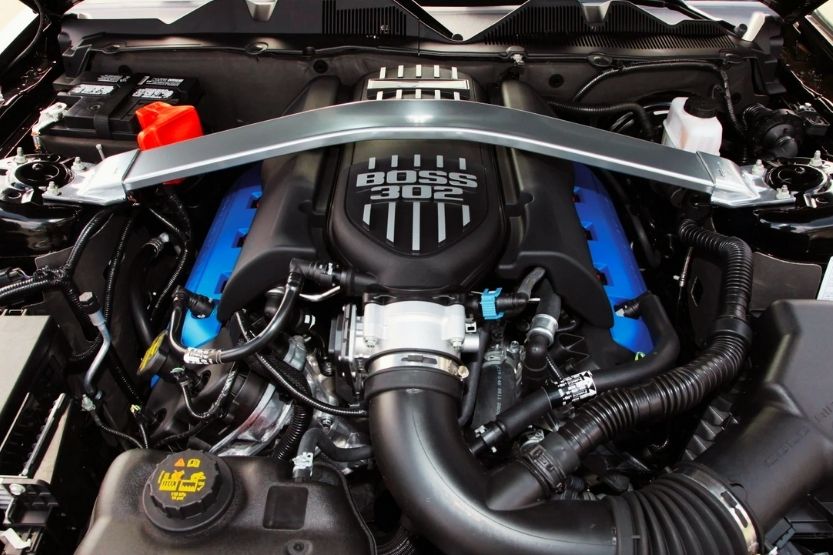
It is also worth noting that the 5.0 Coyote engine has several variants. The different models feature some of the most innovative technologies that separate Ford engines from many of its competitors:
1. Roadrunner
The first special edition of the Coyote engine, the Roadrunner, was first seen in the Boss 302 Mustang in 2012.
Stiffer Valve Springs Than Traditional 5.0 Coyote Engine
Compared to the traditional 5.0 Coyote engine at that time, the Roadrunner has stiffer valve springs and larger camshafts. In turn, they help improve the speed and power of the engine.
2. Voodoo
Unique Variant of the 5.0 Coyote Engine
Voodoo is a unique variant of the 5.0 Coyote engine to date. The flat-plane crank is what differentiates it from other modular engines.
Excellent Option for Race
However, such a design feature creates a louder noise and more vibrations. It also makes it possible for the engine to rev quicker, making it an excellent option for racing applications.
3. Aluminator
Ford’s goal for introducing the Voodoo version of the 5.0 Coyote is to make it exclusive to Shelby GT350R. Hence, they have to develop another engine for their Ford performance lineup. This is where the Aluminator enters the picture.
Cross-plane Crankshaft
Instead of the crankshaft having a flat plane shape, it has a cross-plane. It can reach up to 580 HP and 445 ft-lbs of torque.
4. Predator
This is the most recent addition to Ford’s lineup of the 5.0 Coyote engine. It is essentially a Voodoo, but the biggest difference is the cross-plane crankshaft. It is a part of the 2020 GT500, which Ford regards as the most powerful production Mustang.
Conclusion – 5.0 Coyote Engine Specs, Problems, Reliability
The 5.0 Coyote is a naturally-aspirated engine introduced by Ford in 2011. It is known for its reliability and is one of the favorite modular engines for Mustangs and F-150s.
With its tough construction and plethora of innovative technologies, the engine can deliver superior power and incredible performance, even under challenging conditions.
Despite its reliability, the 5,0 Coyote also has several problems, including the following:
- Engine tick
- Rough idling
- Stalling
- Spark plug damage
- Ignition coil damage
- Recirculation valve malfunction
Meanwhile, here is a quick summary of the specs of the three generations of the 5.0 Coyote engine:
| Gen 1 Coyote | Gen 2 Coyote | Gen 3 Coyote | |
| Horsepower | 412, 420 HP | 435 HP | 460 HP |
| Torque | 390 lb-ft | 400 lb-ft | 420 lb-ft |
| Displacement | 4.951 L | 4.951 L | 5.035 L |
| Stroke | 92.7 mm | 92.7 mm | 92.7 mm |
| Bore | 92.2 mm | 92.2 mm | 93 mm |
| Compression | 11:1 | 11:1 | 12:1 |

![5.0 Coyote F150 Reliability [How Reliable Is This Ford Engine?] 5.0 coyote f150 reliability](https://roadsumo.com/wp-content/uploads/2021/06/5.0-coyote-f150-reliability-150x150.jpg)
![Are Acuras Good Cars? [Problems, Reliability, Maintenance Costs] are acuras good cars](https://roadsumo.com/wp-content/uploads/2022/06/are-Acuras-good-cars-150x150.jpg)

![Are BMWs Good Cars? [Reliability, Problems, Life Expectancy] are bmws good cars](https://roadsumo.com/wp-content/uploads/2022/04/are-BMWs-good-cars-150x150.jpg)
![Ford 6.2 Engine Problems [5 Most Common and How to Fix] ford 6.2 engine problems](https://roadsumo.com/wp-content/uploads/2021/06/ford-6.2-engine-problems-150x150.jpg)
![2003 Duramax Specs, Problems [LB7 Full Review] 2003 Duramax](https://roadsumo.com/wp-content/uploads/2022/06/2003-Duramax-150x150.jpg)
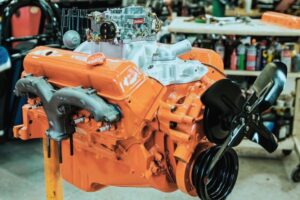
![Read more about the article 2003 Duramax Specs, Problems [LB7 Full Review]](https://roadsumo.com/wp-content/uploads/2022/06/2003-Duramax-300x200.jpg)
